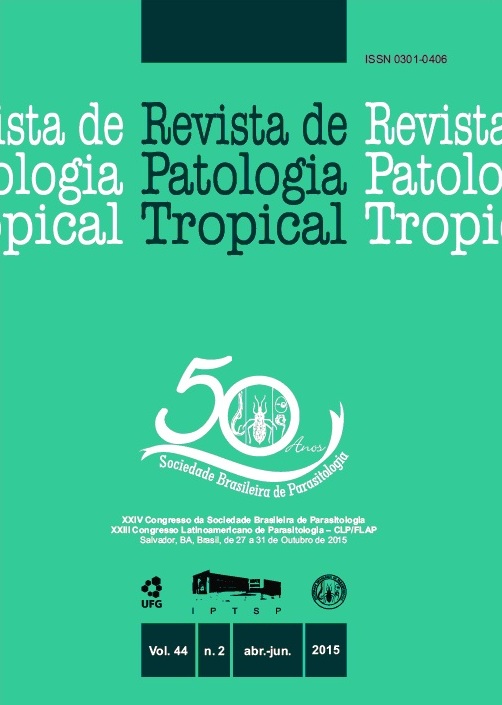PEDICULOSIS CAPITIS ON CHILDREN AND YOUNG PEOPLE ATTENDED IN ORPHANAGES AND OUTPATIENT CLINICS IN MANAUS, AM, BRAZIL.
DOI:
https://doi.org/10.5216/rpt.v44i2.36651Keywords:
Pediculosis, ambulatory, shelters, orphanages, ManausAbstract
Pediculosis capitis is a public health problem not only in Brazil but in many countries worldwide.School children have been shown to be the most likely group to be infested due to their habits andbehaviors. Recent studies have encountered low prevalences of this infestation on children attendedin nurseries and schools in Manaus, Amazon State. The study objectives were to verify the prevalenceof pediculosis on children and young people assisted in shelters / orphanages and the pediatricdepartment of a public clinic in the city of Manaus, as well as to analyze possible associations withage, sex, ethnicity and length of hair of those infested. The diagnosis of parasites was made from thedirect examination of the heads of children and young people and then a form with information wascompleted, for each of the 437 individuals examined. There was an overall occurrence rate of 44.8%.The parasite was more frequent on females (57.7%) and in the age groups older than five years old.Subjects with long hair had the highest prevalence (62.3%). The results presented in this work show theneed to investigate this parasitic skin disease in groups that have the characteristics / epidemiologicalfactors studied here and others that may predispose them to this and other ectoparasites, even in areas/ cities where this parasitic dermatitis has shown low occurrence rates in the population.Downloads
Downloads
Published
How to Cite
Issue
Section
License
The manuscript submission must be accompanied by a letter signed by all authors stating the full name and email address, confirming that the material has not been published or is under consideration for publication elsewhere, and agreeing to transfer copyright in all media and formats for Journal of Tropical Pathology. The authors will not be paid for published articles. They are solely responsible for the content of those articles, even if the Editor holds the right to adjust them to the norms of the journal.
The reviewers will not be paid for the peer review process.

